What Can Manufacturers Do About Inflation?
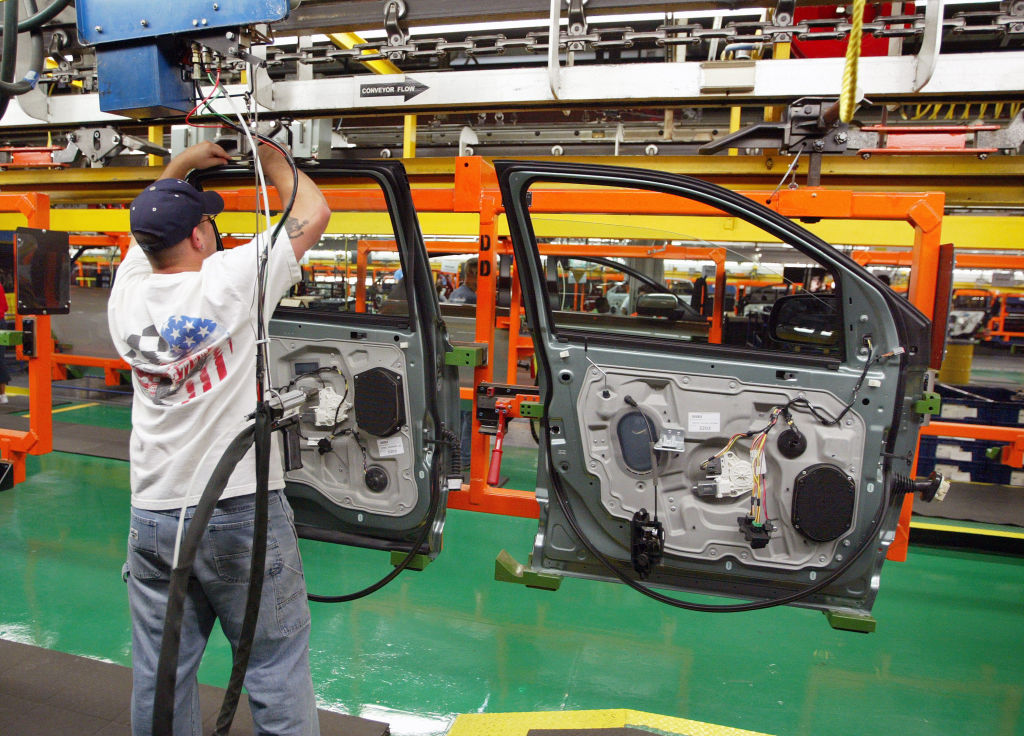
Why is inflation happening now? What can we do about it? And how should manufacturers factor it into their plans for the future? The NAM’s Leading Edge program partnered with management consultant company Bain on a recent webinar that answered these questions and more. Here’s a quick recap.
Why it’s happening: According to Karen Harris, managing director of the Macro Trends Group at Bain, inflationary potential was building prior to the pandemic because of declining workforce growth around the world, underinvestment in energy and production and the concentration of supply chains with very few buffers in place.
- Today’s inflation, Harris said, is the result of that “inflationary potential” meeting a series of triggers, including the COVID-19 pandemic and Russia’s war in Ukraine—both of which have destabilized global markets and supply chains.
What it means: Jason Heinrich, a senior partner in Bain’s Chicago office, discussed the challenges that inflation poses to business owners.
- Among these are declining gross margins as costs of goods skyrocket; rapidly increasing labor, energy and input costs; difficult cash allocation decisions; lost sales if product availability decreases; and erosion of customer perception if price increases are too aggressive.
Strategies for success: Bain has analyzed thousands of companies over the past two decades to identify several successful strategies for accelerating performance during periods of disruption and providing future-proof against inflation.
- These strategies include expanding the CFO role to support the C-suite in navigating turbulent times; enhancing growth through customer engagement efforts; being strategic about price increases; building resilient and growth-focused supply chain operations; scaling and doubling down on automation as wages increase; and investing in building the best workplace to attract top talent in a difficult labor market.
- “The research that we’ve done over a couple of decades suggests that the firms and businesses that are on their front foot and playing offense in these periods of disruption outperform their peers over a long period of time,” said Heinrich. “These are moments of truths and moments of opportunity.”
Questions to ask: According to Harris and Heinrich, there are a few critical questions businesses should be asking in the current moment to help manage inflation challenges effectively, including the following:
- How robust is customer demand, and what changes do you anticipate in the next 12–24 months?
- How do you anticipate inflation will impact your business, and what actions can you take this quarter or over the next four quarters?
- How are you assessing resilience, and to what extent should you trade off efficiency for resilience?
- How can you evolve your strategic-planning process to be more dynamic?
Learn more: For more information, check out the full webinar here.
How the NAM can help: If you’re looking for resources to achieve time and cost savings, guard against inflation and help your business solve other current challenges, the NAM’s Inflation Resource Bundle for Manufacturers can help. Click here to find out how.
Shattering Records: Creators Wanted Has a Big Impact in Michigan
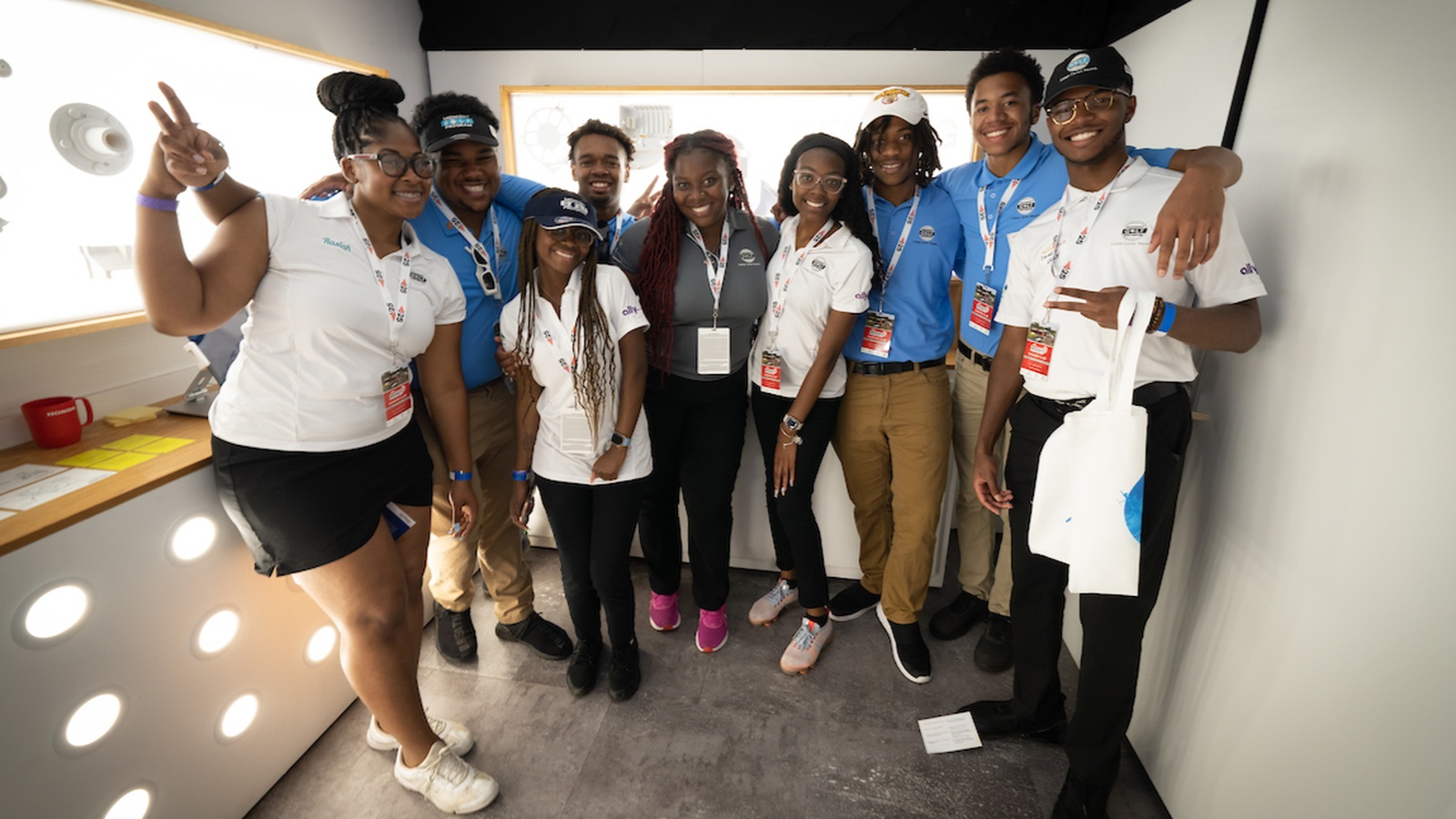
A record breaker. That’s the best way to describe the all-time high attendance rates, email subscriber numbers and other signs of surging interest in manufacturing careers brought about by the Creators Wanted Tour stop at the Dow Great Lakes Bay Invitational in Midland, Michigan, last week.
Family first: The nationwide tour, a joint initiative of the NAM and its workforce development and education partner, The Manufacturing Institute, marked its 10th stop July 13–16. This stop’s overarching theme: family, according to Dow Chairman and CEO and NAM Board Chair Jim Fitterling.
- Dow sponsored the golf invitational, the first LPGA event to achieve carbon neutrality, as well as the four-day Creators Wanted event. The company also recently more than doubled its commitment to the Creators Wanted campaign, to $2 million.
- “You’ll see many, many families out here,” Fitterling told the audience at the tour stop’s kickoff event. “The reason we’ve got the family focus here is that it’s not just about students; it’s also about parents. An awful lot of students say that they won’t consider going into manufacturing because they aren’t encouraged by their parents to go into that field.”
Shifting perceptions: One of the reasons that recent generations of parents haven’t encouraged their children to go into manufacturing? Misconceptions, explained Fitterling. But those are starting to change, he and other kickoff-event panelists said.
- “Sometimes [parents and students] have perceptions about manufacturing that just aren’t current,” Fitterling said. “Creators Wanted is about … [giving] them a hands-on experience to show them what’s going on in advanced manufacturing today.”
- MI President Carolyn Lee cited MI–Deloitte survey data showing significant recent growth in the percentage of parents who say they would encourage their children to enter manufacturing: 40%, up from 27% in 2017. “The good news is we are already making a dent on change,” Lee said.
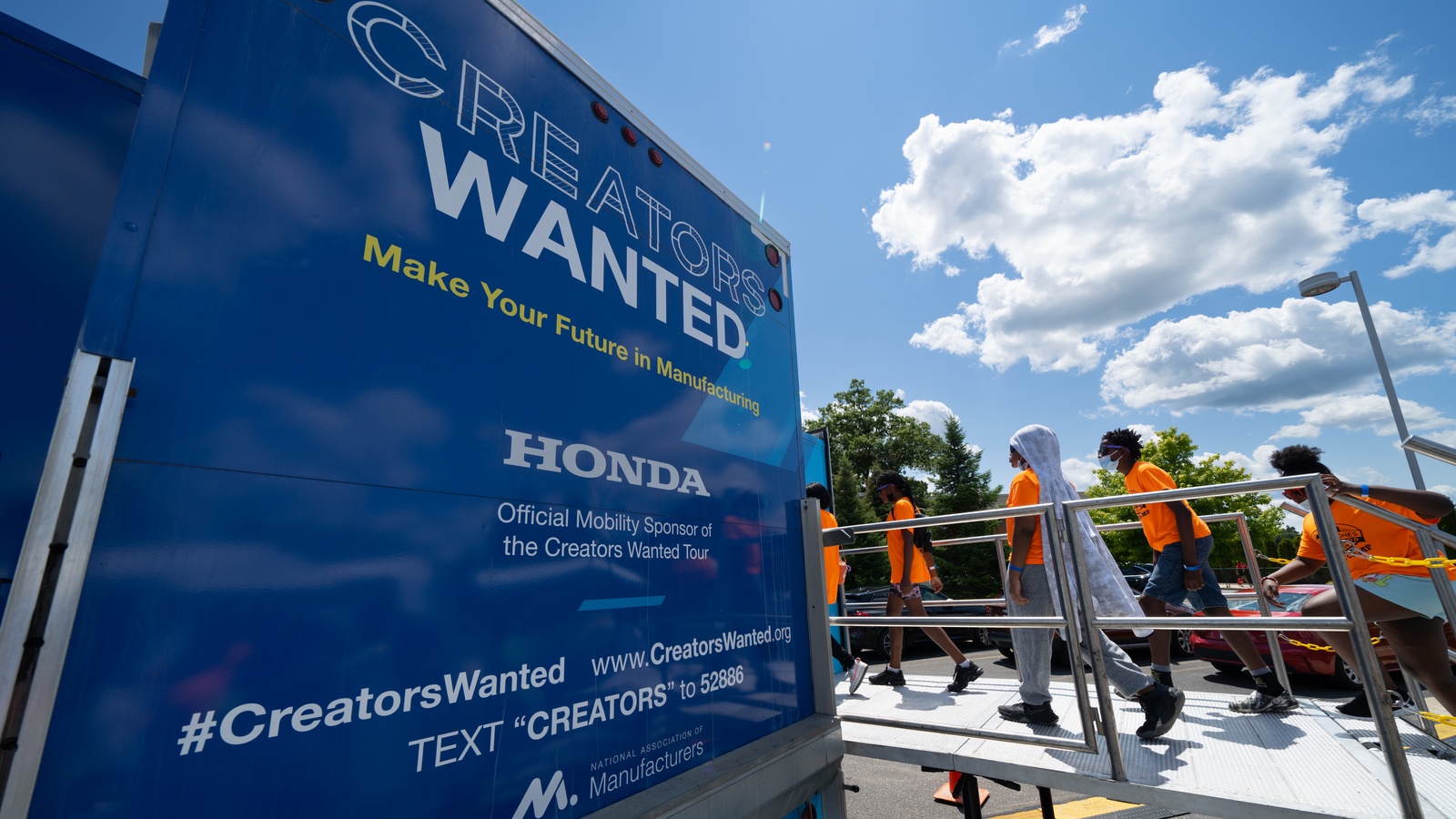
Just plain fun: For many of the attendees at last week’s Midland tour stop, “racing to the future” in the Creators Wanted immersive experience/high-tech escape rooms, meeting creators at Dow, getting career coaching tips from FactoryFix, learning about opportunities in Michigan with the Michigan Manufacturers Association and participating in all the other family-friendly events was as much about having a good time as considering a new career path.
- “Having to use teamwork to exit the escape room and things like that, I find it really interesting,” said one student participant. “I take away that I could … have a career in manufacturing.”
- In addition to the immersive experience, there were activities and games in the STEM Center, where “kids, students and parents or other supervising adults [could] see how STEM relates to not only sports but other technologies that can help us ‘imagine better,’” such as 3D printing, said NAM Managing Vice President of Brand Strategy Chrys Kefalas.
- The next generation of manufacturers were also welcomed to take part in “Friction Hockey” and “Binary Bits” experiments, which let them see how surface friction affects object movement and translate computer code into phrases using LEGO blocks, respectively.
- There was also a fully stocked “Kid Zone” with miniature golf and a giant mural to which kids were encouraged to add their own artwork, as well as a “First Tee Junior Clinic,” hosted by the nonprofit First Tee, which aims to teach children life skills through golf.
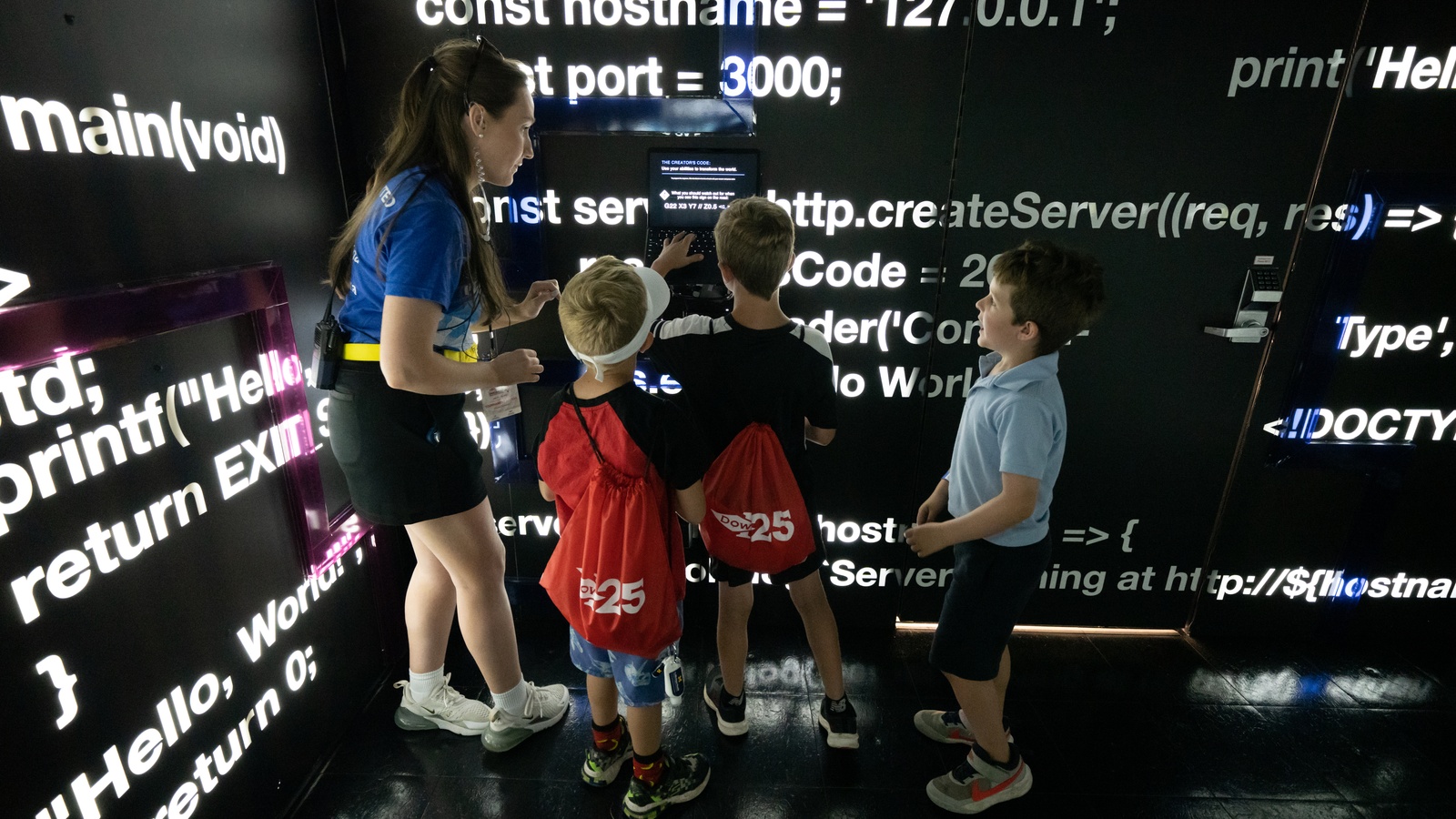
Women in manufacturing: Midland was also the site of an important announcement from Lee during a fireside chat with Dow Senior Vice President of Operations, Manufacturing and Engineering John Sampson: Dow will provide a $500,000 grant over four years to support the MI’s Women MAKE America’s 35×30 campaign.
- The campaign’s goal: to increase the representation of women in the manufacturing workforce to 35% by 2030.
Major impact: The Dow GLBI tour stop generated a lot of interest.
- More than 47,000 email subscribers from Michigan signed up to learn more about modern manufacturing careers.
- More than 1,550 students, parents and/or attending adults went through the immersive experience.
- Ninety-six percent of surveyed immersive-experience participants reported an improved view of modern manufacturing, and 72% of respondents who had previously described manufacturing as “dirty,” “dangerous,” “old-fashioned,” “part of the past” or “traditional” described manufacturing as “modern,” “innovative,” “high tech” or “creative” in the latest survey.
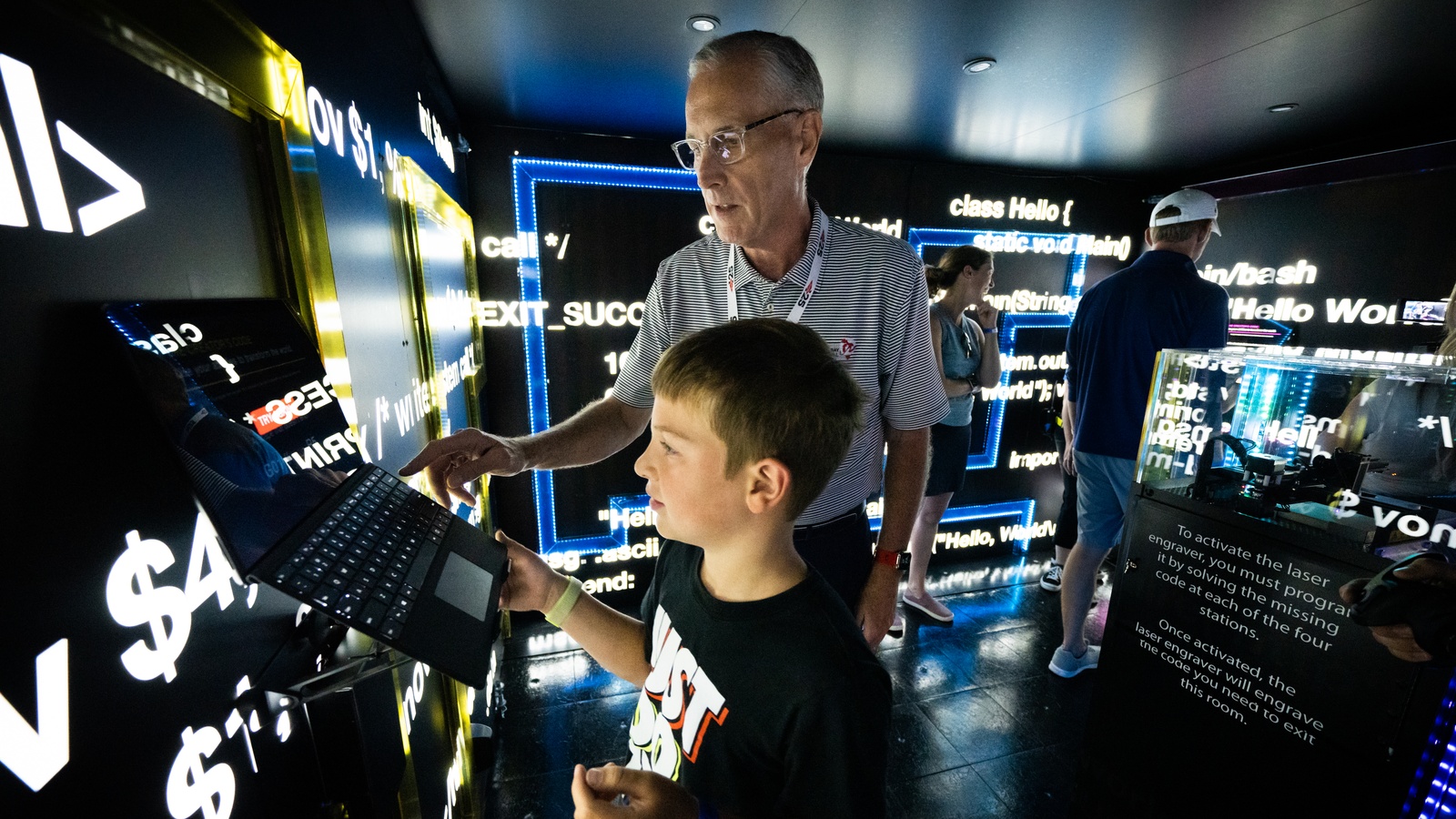
Just some of the mentions: Many media outlets covered the event, including the following:
- Creators Wanted Experience encourages kids to explore manufacturing jobs (ABC News 12)
- Creators wanted — opportunity abounds in manufacturing, a joint op-ed by Fitterling and NAM President and CEO Jay Timmons (Crain’s Detroit Business)
- ‘Creators Wanted’ conveys urgency of manufacturing labor shortage (Midland Daily News)
- This is your chance to create the future, an op-ed by Michigan Manufacturers Association President John Walsh (Midland Daily News)
The last word: The Creators Wanted mobile experience encapsulates what modern manufacturing is all about, said Michigan Attorney General Dana Nessel, who toured it along with Solicitor General Fadwa Hammoud.
- The experience “showcased … new styles of recruiting & making the safety, inclusion, creativity & technology the new normal,” Nessel tweeted. “The Creators Wanted interactive experience was so cool!”
Watch now! See a video of tour-stop highlights here.
Manufacturers Back Chips Bill, Call for Further Action from Congress
Timmons: “A vote for the CHIPS Act funding is a vote for a stronger, more competitive manufacturing industry in America.”
Washington, D.C. – Ahead of consideration of legislation to bolster U.S. semiconductor manufacturing, National Association of Manufacturers President and CEO Jay Timmons released the following statement:
“A vote for the CHIPS Act funding is a vote for a stronger, more competitive manufacturing industry in America. But if Congress fails to pass this investment in the coming days, they will hand other countries a competitive advantage and weaken our own economy at a precarious moment.
“Other provisions of the China competition bill still under negotiation also need to make it to the president’s desk, and manufacturers firmly support their inclusion in this package. We will continue our advocacy for the anti-counterfeiting measures, trade provisions, supply chain investments and more. Congress must get those done.
“This week, we can take a powerful step forward with chips funding and move toward a future where semiconductor shortages—and the disruptions they’ve created—are a thing of the past. Other nations are not waiting around to ramp up semiconductor manufacturing. America should be leading, not falling behind.”
Background:
According to the NAM’s latest Manufacturers’ Outlook Survey, more than 88% of respondents said it was important for the federal government to take steps to support the domestic manufacturing sector in the face of increased global competition for industrial investment, with nearly 58% saying “very important” and 30.7% saying “somewhat important.” When asked about what aspects of the China competition legislation were most important for supporting manufacturing activity, the top choices were addressing port congestion and competition issues in ocean shipping (70.9%), eliminating ill-conceived labor provisions that facilitate unionization campaigns (61.3%), strengthening U.S. leadership in energy innovation and competitiveness (58.2%), funding to increase domestic semiconductor production capacity (57.9%), investments to support the critical minerals supply chain (55.7%) and ensuring the tax code provides a full deduction for research expenses (48.3%), among others.
-NAM-
The National Association of Manufacturers is the largest manufacturing association in the United States, representing small and large manufacturers in every industrial sector and in all 50 states. Manufacturing employs more than 12.8 million men and women, contributes $2.77 trillion to the U.S. economy annually and accounts for 58% of private-sector research and development. The NAM is the powerful voice of the manufacturing community and the leading advocate for a policy agenda that helps manufacturers compete in the global economy and create jobs across the United States. For more information about the NAM or to follow us on Twitter and Facebook, please visit www.nam.org.
Why Nuclear is Key to Climate & Energy Security

As energy prices remain at their highest levels in more than a decade, there’s little sign that the U.S. is on a steady course toward energy security. That’s why the NAM is urging the federal government to pursue all available options—including nuclear.
The lowdown: Nuclear energy is a safe, reliable and the largest zero-emission source of energy in the U.S.
- At a time of pronounced supply chain challenges, oil-and-gas lease cancellations and costly shortages of critical minerals, nuclear energy could go a long way toward fortifying the grid.
- In addition, the technology has advanced enormously in recent years. Microreactors, small enough to be moved by truck, are poised to help solve the challenge of powering remote areas.
- The Department of Energy also recognizes the importance of nuclear energy, recently noting its relevance to energy security in the department’s Supply Chain Assessments.
What we’re saying: “The reality is that to meet our growing electricity needs and climate goals, nuclear-generated power must be part of the solution,” said NAM Director of Energy and Resources Policy Chris Morris. Here are his key policy recommendations:
- Encourage capital formation: The NAM secured a significant $6 billion investment in the Civilian Nuclear Credit Program through the recent infrastructure bill, but more robust investments will be needed to ensure operations continue at current nuclear projects, Morris said.
- Relicensing: Licensing and permitting processes should meet the highest standards, but the Nuclear Regulatory Commission often takes years to complete them. The NRC should use its position on the Federal Permitting Improvement Steering Council to make efficiency improvements in its licensing processes under the recently announced Permitting Action Plan.
- Fuel supply chain security: The U.S. imports uranium for civilian nuclear use from Russia, Kazakhstan, Uzbekistan, Canada and Australia, among others. Meanwhile, new advanced reactor concepts will utilize high-assay low-enriched uranium (HALEU) which is now solely produced by Russia and China. The NAM has been calling on policymakers to prioritize increasing domestic production.
- SMRs and microreactors: Small modular reactors use factory-built components to streamline construction, while microreactors are portable and self-sufficient. Both will be crucial for next-generation nuclear power—but the U.S. government must invest in their manufacturing and modernize regulations accordingly.
- Spent fuels: The NAM has long supported ongoing R&D into the storage and transportation of spent fuels—and progress is being made. Just yesterday, NRC staff recommended licensing a new storage project in New Mexico, “determining there would be largely minor environmental impacts from the project,” according to POLITICO (subscription).
- Public perception: Commercial nuclear power is sometimes viewed as dangerous or unstable based on historic misconceptions. In truth, the U.S. nuclear industry is leading the world in best practices, safety and accountability. Policymakers must engage with local communities to provide the facts and emphasize the importance of nuclear power for combating climate change.
The last word: “Our current fleet and the next generation of nuclear power must be a substantial part of a clear-eyed strategy to address climate and energy security,” Morris said.
Dow Doubles Commitment to $2 Million for Manufacturing’s Largest Workforce Campaign
Investment Will Enable Creators Wanted to Build on Its Historic Impact in More Communities Across the Country
MIDLAND, Mich. – Dow, the National Association of Manufacturers and The Manufacturing Institute announced today that Dow has committed an additional $1 million to the Creators Wanted campaign. This new pledge is on top of the $1 million Dow has already contributed to the NAM and the MI’s campaign designed to educate, inspire and empower the next generation of manufacturers.
Dow’s latest financial contribution ensures Creators Wanted can continue to recruit new manufacturers online and in person throughout 2022, bringing the experience to thousands of additional students, parents, career mentors and community leaders nationwide. Creators Wanted will make its next public stop at the Ladies Professional Golf Association’s Dow Great Lakes Bay Invitational July 13–16, bringing the experience to thousands of tournament goers and students.
“It is now more important than ever to invest in America’s future manufacturing workforce,” said Dow Chairman and CEO and NAM Board Chair Jim Fitterling. “Not only does the fate of U.S. manufacturing competitiveness rest in significant part on our ability to build the future workforce, but we also have an opportunity to lift up more people with the promise and possibility of manufacturing careers. Dow is proud to invest an additional $1 million in the NAM and MI’s Creators Wanted campaign. We’ve already been able to inspire thousands of students through Creators Wanted and look forward to bringing this experience to Midland and other communities moving forward.”
In addition to the upcoming Creators Wanted activation at GLBI, Dow’s new round of support will bring the mobile experience to several more cities, including Chicago, Columbia, South Carolina, and Baton Rouge, Louisiana, among others, throughout fall 2022 and into spring 2023. This capitalizes on the momentum from Dow’s previous contribution that helped bring Creators Wanted to six U.S. cities—Columbus, Ohio; Columbia, South Carolina; Pella, Iowa; Charlotte, North Carolina; Fort Worth, Texas; and Freeport, Texas—for its inaugural fall 2021 tour.
Manufacturing in the United States today has more than 900,000 open jobs. By 2025, Creators Wanted aims to recruit 600,000 new manufacturers; increase the number of students enrolling in technical and vocational schools or reskilling programs by 25%; and increase the positive perception of the industry among parents and career mentors. The campaign features a first-of-its-kind student- and teacher-endorsed traveling immersive experience and jobs tour, which has brought together more than 5,000 students in person and recruited more than 200,000 students and career mentors to learn more about modern manufacturing careers after only seven brief stops.
“Dow’s unwavering commitment to manufacturing and Creators Wanted will allow us to do more to tackle the critical need for workers now and reach into more local communities to educate teachers, parents and other career mentors and students about rewarding careers in modern manufacturing,” said NAM President and CEO and MI Board Chair Jay Timmons. “The NAM is proud to announce our continued and strong partnership with Dow to strengthen U.S. manufacturing competitiveness and build the American manufacturing workforce of tomorrow.”
The campaign is also underpinned by sustained workforce development and education initiatives at the MI, targeting youth, veterans, women and other underrepresented communities throughout the country.
“The MI is grateful to Dow whose support bolsters our ability to achieve a critical component of our mission—to attract and develop world-class manufacturing talent,” said MI President Carolyn Lee. “With Dow’s support, the MI can expand our reach, furthering our opportunities to educate the next generation of manufacturers on the lucrative and fulfilling careers that exist in modern manufacturing for people of all backgrounds and interests.”
Through the campaign, the NAM seeks to continue its mission to remediate common misperceptions about careers in manufacturing and provide resources and opportunities that will help reduce the skills gap and improve lives.
For more information on the campaign, visit CreatorsWanted.org and view results from previous tour stops here.
-NAM-
The National Association of Manufacturers is the largest manufacturing association in the United States, representing small and large manufacturers in every industrial sector and in all 50 states. Manufacturing employs more than 12.7 million men and women, contributes $2.71 trillion to the U.S. economy annually and accounts for 58% of private-sector research and development. The NAM is the powerful voice of the manufacturing community and the leading advocate for a policy agenda that helps manufacturers compete in the global economy and create jobs across the United States. For more information about the NAM or to follow us on Twitter and Facebook, please visit www.nam.org.
-The Manufacturing Institute-
The MI grows and supports the manufacturing industry’s skilled workers for the advancement of modern manufacturing. The MI’s diverse initiatives support all workers in America, including women, veterans and students, through skills training programs, community building and the advancement of their career in manufacturing. As the workforce development and education partner of the NAM, the MI is a trusted adviser to manufacturers, equipping them with resources necessary to solve the industry’s toughest challenges. For more information on the MI, please visit www.themanufacturinginstitute.org.
-Dow-
Dow (NYSE: DOW) combines global breadth; asset integration and scale; focused innovation and materials science expertise; leading business positions; and environmental, social and governance (ESG) leadership to achieve profitable growth and deliver a sustainable future. The Company’s ambition is to become the most innovative, customer centric, inclusive and sustainable materials science company in the world. Dow’s portfolio of plastics, industrial intermediates, coatings and silicones businesses delivers a broad range of differentiated, science-based products and solutions for its customers in high-growth market segments, such as packaging, infrastructure, mobility and consumer applications. Dow operates 104 manufacturing sites in 31 countries and employs approximately 35,700 people. Dow delivered sales of approximately $55 billion in 2021. References to Dow or the Company mean Dow Inc. and its subsidiaries. For more information, please visit www.dow.com or follow @DowNewsroom on Twitter.
Manufacturing Leadership Council Recognizes Pfizer CEO
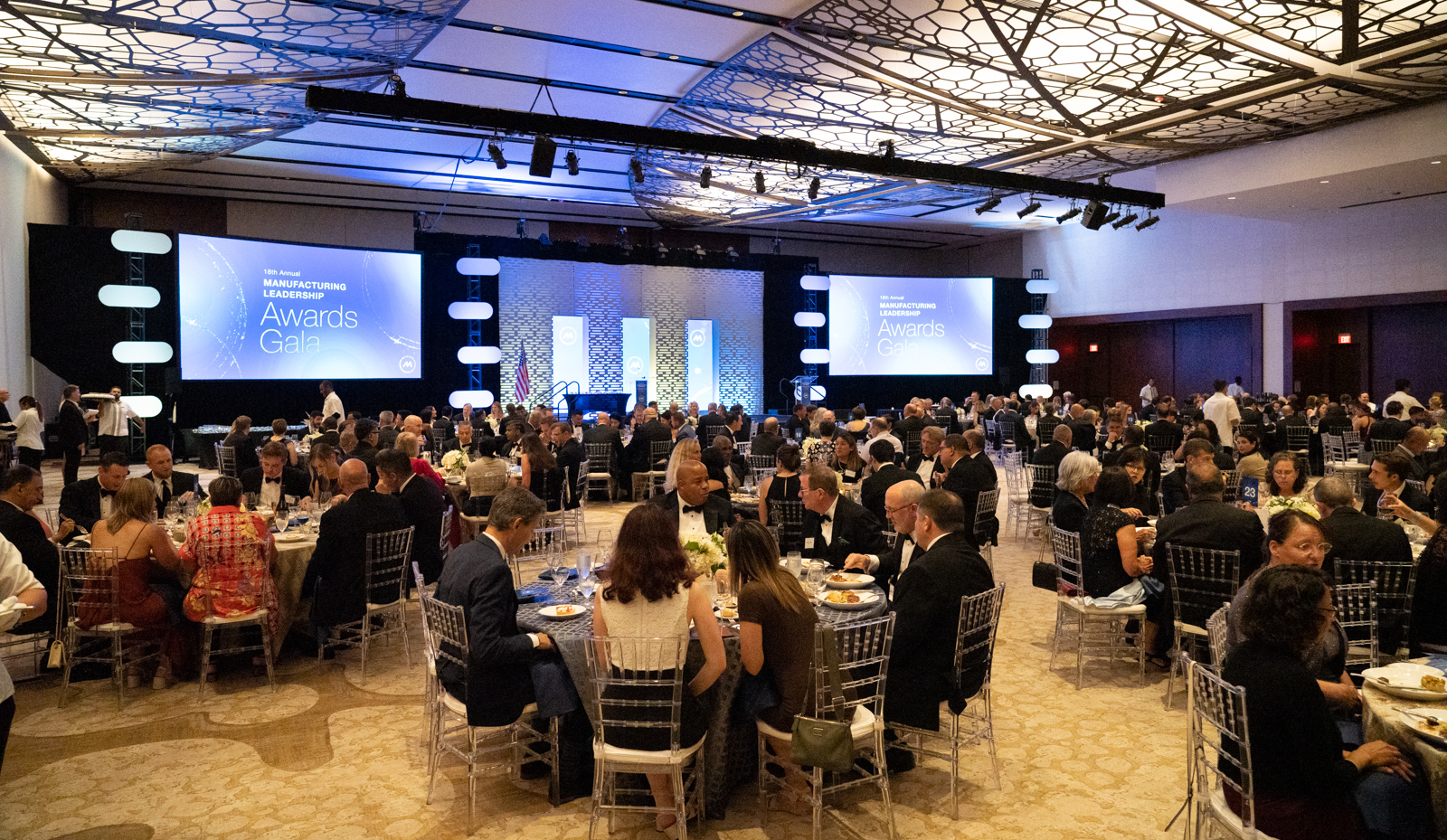
The Manufacturing Leadership Council—a division of the NAM that helps manufacturers leverage digital transformation—named Pfizer CEO Dr. Albert Bourla the 2022 Manufacturing Leader of the Year at the 18th annual Manufacturing Leadership Awards Gala.
The details: The ML Awards are the U.S. manufacturing industry’s biggest stage for recognizing excellence in digital manufacturing. Since the program’s founding in 2005, more than 1,000 high-performing projects and individual leaders have been honored with an award. Winners represent companies of varying sizes in a wide array of industries.
The big award: The Manufacturing Leader of the Year award was presented to Bourla for Pfizer’s extraordinary and ongoing contributions in fighting the COVID-19 pandemic.
- “Manufacturing in America today is stronger thanks to the leadership of Dr. Bourla and his team at Pfizer, including our Executive Committee member Mike McDermott,” said NAM President and CEO Jay Timmons. “Albert and Mike’s passion and dedication to defeating COVID-19 set an example for thousands of companies as our industry navigated and responded to the evolving pandemic, and their leadership and innovation will make us better prepared to respond to the next crisis.”
Other honorees: Awards were given to companies that excelled in various categories of manufacturing, including Protolabs for collaborative ecosystems, AB InBev for digital network connectivity and operational excellence, Dow for digital supply chains, General Motors for engineering and production technology, Flex and Johnson & Johnson for enterprise integration technology, AUO Corporation for sustainability and ALOM Technologies for transformative cultures.
Manufacturers of the Year: Protolabs was named the Small/Medium Enterprise Manufacturer of the Year, and AB InBev was named the Large Enterprise Manufacturer of the Year.
The last word: “Manufacturers continue to be the driving force for global economic recovery and pandemic response as they establish innovative ways to problem-solve in an increasingly complex environment,” said MLC Co-Founder, Vice President and Executive Director David R. Brousell. “Those recognized tonight have helped establish a roadmap for the future of the sector and highlight the importance of Manufacturing 4.0.”
Calling All Creators: Creators Wanted Live Arrives at Open Call 2022
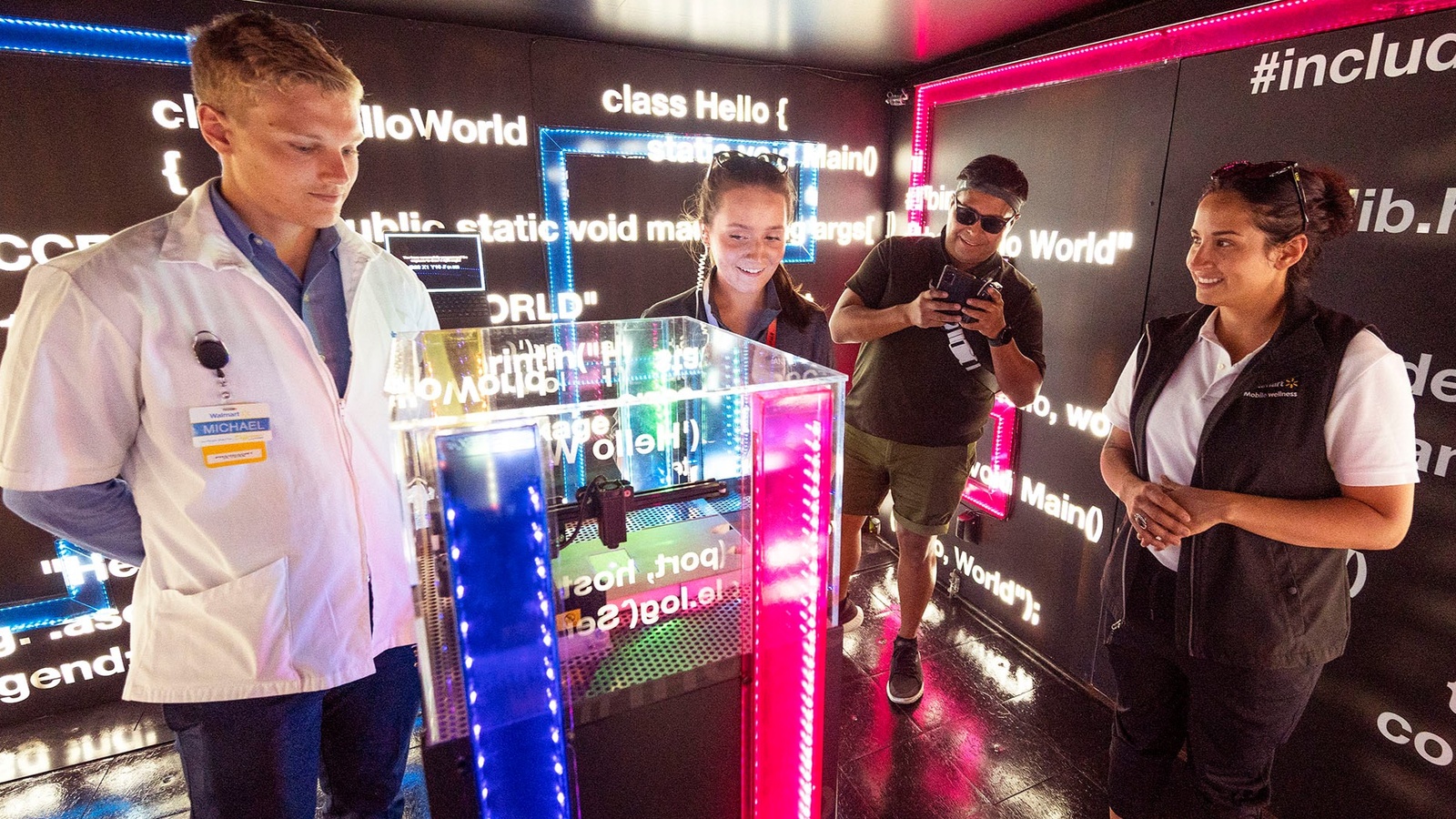
This week, the Creators Wanted Tour Live made its eighth national tour stop—at Walmart’s 9th annual open call for entrepreneurs and manufacturers.
Drawing a crowd: On Tuesday and Wednesday, the Creators Wanted mobile experience was onsite in Bentonville, Arkansas, as 1,100 small and medium-sized business owners pitched their products to Walmart and Sam’s Club for Walmart’s Open Call 2022. The ultimate prize for the business owners? A “gold ticket” to get their products into the stores.
- The two-day Creators Wanted stop drew more than 2,000 people, many of whom jumped at the opportunity to solve puzzles and “race to the future” in the award-winning, immersive escape room.
- In addition to Walmart, Chart Industries, a leading global manufacturer of highly engineered equipment servicing multiple applications in clean energy and industrial gas markets, helped bring the experience to Open Call attendees and the Bentonville community.
- The tour, which aims to generate interest in and excitement about manufacturing careers, is a joint project of the NAM and its workforce development and education partner The Manufacturing Institute.
Committed to manufacturing: The aim of bringing Creators Wanted to this year’s Open Call was to bolster the positive perception of modern manufacturing careers, recruit new manufacturers and connect entrepreneurs and manufacturers with the MI’s workforce-shortage solutions.
- Walmart has committed to spending $350 billion on products made, grown or assembled in the U.S., in addition to the $250 billion the company pledged in 2013 to spend on similar products.
- Total estimated job growth from these investments: 750,000 new American positions by 2031.
Who was there: MI President Carolyn Lee and Vice President of Program Execution Herb Grant were on hand to give manufacturers greater insight into the MI’s growing set of solutions to the dearth of skilled manufacturing labor.
- Also onsite was new Creators Wanted partner FactoryFix, whose team members helped attendee manufacturers source new talent for their businesses and taught job seekers how to build rewarding careers in the industry.
The reaction: “Wherever we go with our Creators Wanted Tour—including here in Bentonville, Arkansas—students, parents, career mentors and even professionals in other industries see what manufacturing can mean and create for futures,” said NAM Managing Vice President of Brand Strategy Chrys Kefalas. “It’s showing there’s dignity, a “cool” factor and massive reward in making things in the United States. Eyes light up.”
The reach: On the second day of the event, more than 3,000 students had already signed up online to learn more about modern manufacturing careers.
Up next: Coinciding with the Dow Great Lakes Bay Invitational on the LPGA tour, the Creators Wanted Tour Live will make its ninth stop in Midland, Michigan, July 13–16.
Get Ready for MFG Day 2022!
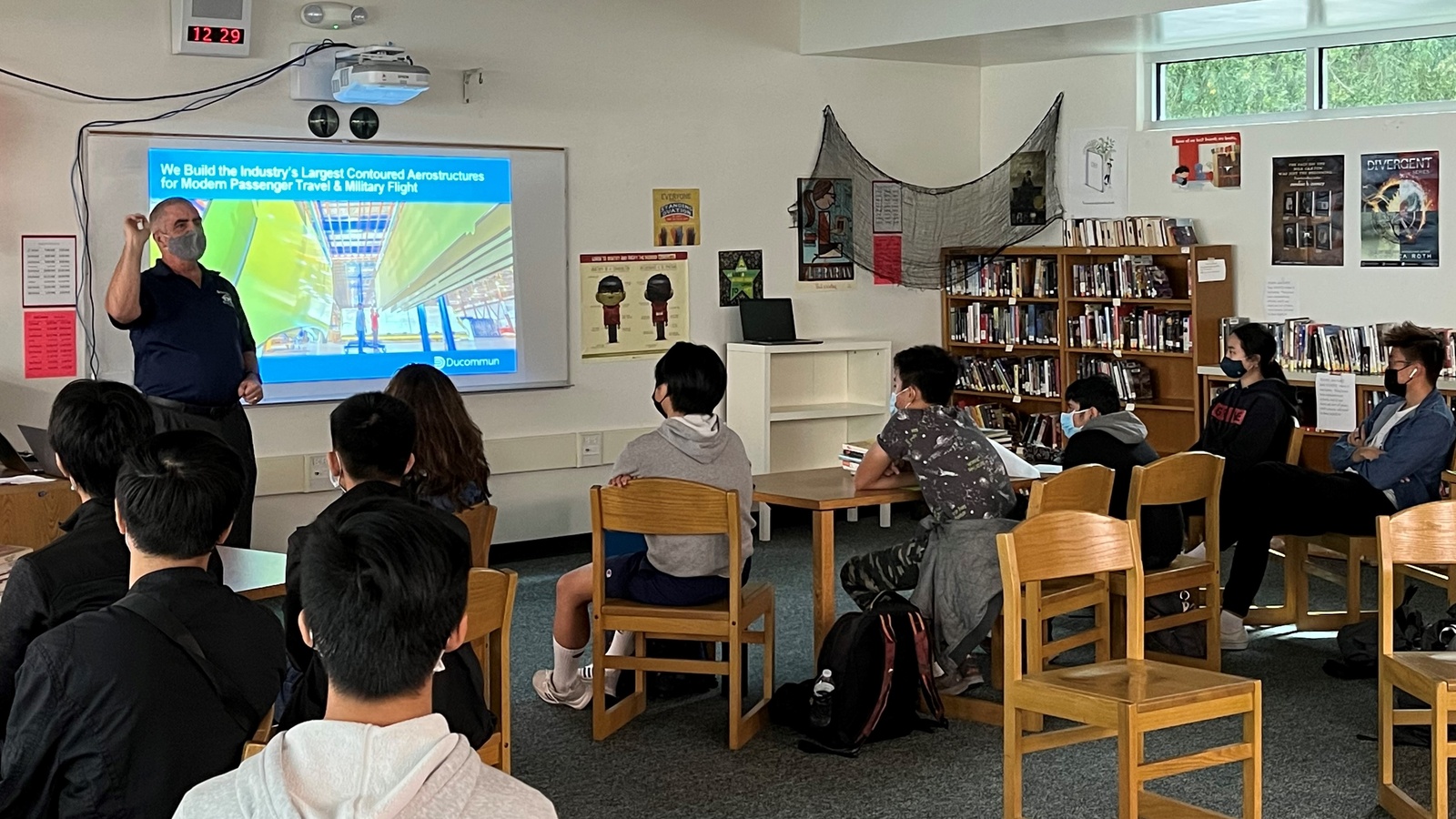
The Manufacturing Institute, the NAM’s workforce development and education partner, is hard at work preparing for MFG Day 2022, coming up on Oct. 7 and celebrated throughout the month of October. In a recent webinar—led by MI Director of Student Engagement Jen White—participants learned about the importance of MFG Day, as well as best practices for planning an MFG Day event.
What it is: MFG Day, organized nationally by the MI, is the industry’s largest grassroots movement to open doors to manufacturing for students, parents and educators.
- A major goal of MFG Day is to change common misconceptions and stereotypes about the manufacturing industry, letting participating students see for themselves that manufacturing plants are modern, safe workplaces that use the most technologically advanced processes to create all kinds of crucial goods.
- Host companies often welcome a mix of students, educators, parents and community leaders and provide them with an inside view of the industry—and the careers available.
Why it matters: MFG Day is crucial to solving the impending workforce crisis in the industry.
- Manufacturers will need to fill about 4 million jobs by 2030, but right now, more than half of those jobs are projected to be unfilled because of a lack of qualified talent or skills. That shortage could cost the U.S. economy up to $1 trillion!
- “We have to increase awareness among students, educators, parents and other adults of influence and the public in general of the importance that manufacturers play in our daily lives,” said White.
Planning an event: The MI has a variety of resources available to help companies plan and execute their MFG Day events this year.
- Past events have ranged from open houses with tours to expos, job fairs and roundtable discussions—and often, companies team up with other manufacturers nearby to create a group event.
- Check out creatorswanted.org/resources for help.
Best practices: During the webinar, White noted that the key to a successful MFG Day event is knowing who your audience is and what they are interested in—and making sure your company can engage with them.
- This can include working with local schools, and also “local liaisons, your workforce boards, your chambers of commerce, local associations, community-based organizations like boys and girls clubs or the Girl Scouts,” said White. “There’s so many different organizations out there that already have wonderful relationships with youth and students.”
- “The key is getting involved and starting to build those partnerships with those schools and those community organizations—and not just to have it be on that one day, but continually. I say MFG Day is every day,” White added.
Timeline: The time to start planning an MFG Day event is today!
- White recommends that potential MFG day hosts begin planning event logistics and start contacting schools or community groups during the summer months.
- Once a plan is in place, it can be registered on the Creators Wanted website and officially listed.
The last word: “We must build ongoing partnerships between companies, community, organizations and schools to continue the engagement beyond one single connection opportunity or one day,” said White. “It won’t easy. It won’t be quick, but it is the way ahead, and students are our future.”
AlloSource Honors Tissue Donors, Heals the Living

The supply chain of biotechnology company AlloSource looks a bit different from the supply chains of other manufacturers—mostly because it hinges on the donation of human tissue.
A different kind of manufacturing: For nearly three decades, Colorado-based AlloSource has transformed donated human tissue from deceased individuals into transplantable products, or “allografts,” that surgeons can use to heal living patients.
- “Something that distinguishes AlloSource among manufacturers is [that] our base materials come from donated human tissue, which makes manufacturing very complex,” said AlloSource Chief Operating Officer Dean Elliott.
- “Donors vary in age, size and many other factors, so a lot of planning takes place to ensure the gift of tissue donation is fully maximized. Each allograft takes a different amount of time to create through a variety of unique processes.”
- Common tissue recovered for donation includes skin to treat burn victims and bones and ligaments for use in orthopedic procedures to restore mobility.
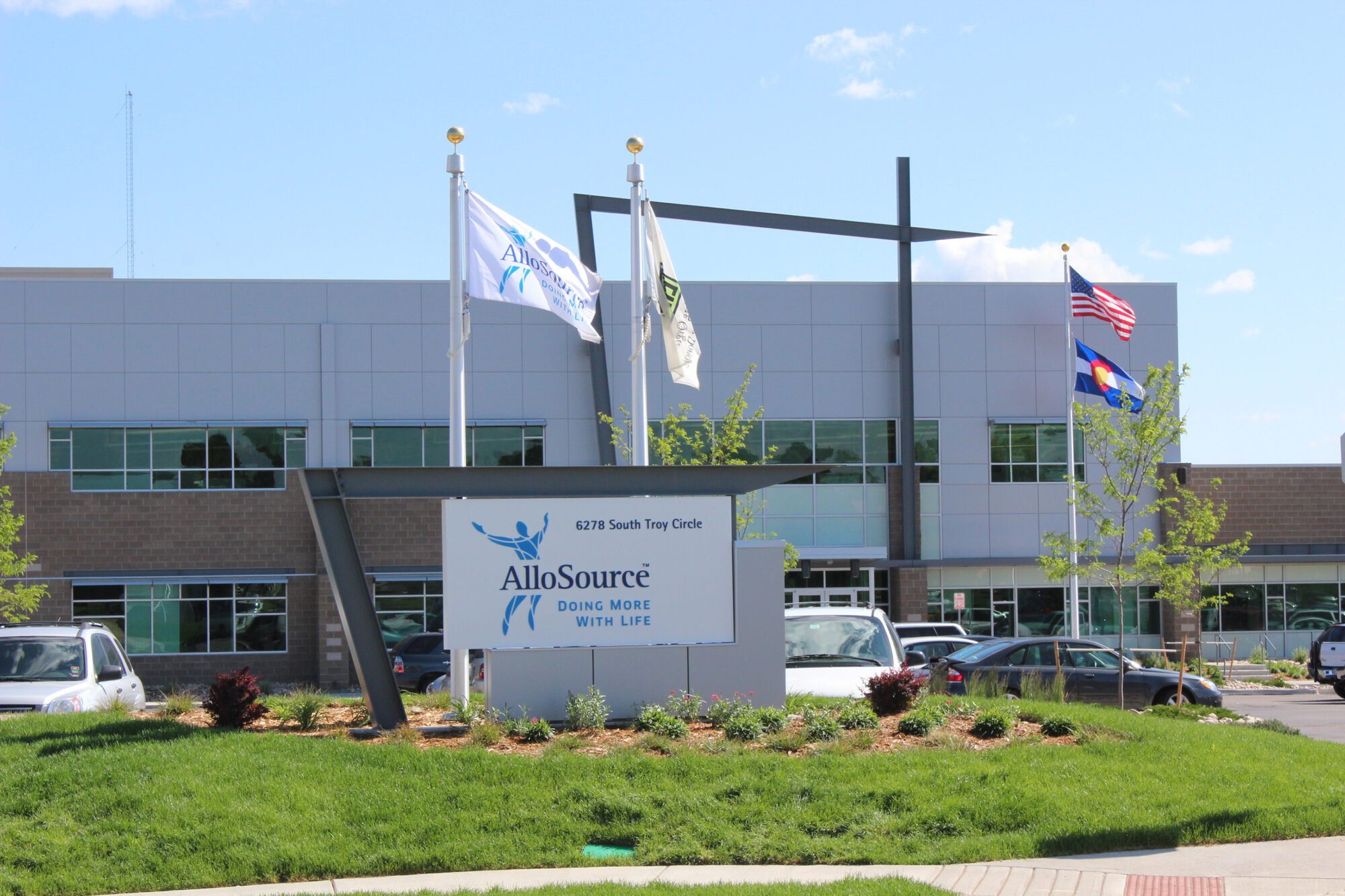
Meeting a need: AlloSource, which today is one of the largest providers of allografts in the world, was founded in 1994 by three organ procurement organizations “out of a need for expertise in transforming deceased human donor tissue into transplantable products,” Elliott said.
- Today AlloSource produces approximately 200 different types of allografts, which are used in surgeries ranging from spinal fusion to shoulder rotator-cuff repair.
- In 2021, the company used tissue from nearly 8,000 unique donors to place more than 200,000 allografts in all 50 states and in 25 countries.
How it works: Following the passing of a donor, a local tissue-recovery agency has just 24 hours to recover the tissue to be made into allografts.
- “One of the miraculous things that happens when someone dies is their cells stay alive—and as long as the tissue is recovered and sent quickly, AlloSource can preserve the tissue while keeping the cells viable,” Elliott said.
Always innovating: AlloSource has made great strides in its field over the past few decades. The company recently patented a method of decellularizing skin, a process that lowers the risk that an allograft will be rejected by a recipient. The method was developed by its R&D and engineering teams.
- This method “keeps our in-house cleanroom usage at a minimum while allowing for a higher volume of processing so that we have enough allografts available to help more patients,” Elliott said.
Meaningful work: At a time of record-high job openings, the biotech organization has a high level of employee retention—thanks to “our unique mission,” Elliott said.
- “We offer competitive pay and benefits and the opportunity to grow in an evolving medical field,” Elliott said. “But we also look for people who are driven by a mission of helping others—and that culture is ingrained in our day-to-day operations.”
World’s Largest Floating Wind Farm Could Become Reality

Energy company Equinor, in partnership with ConocoPhillips, Shell and Total, is looking into the possibility of building the world’s largest floating offshore wind farm, according to POLITICO Pro’s CLIMATEWIRE (subscription).
What’s going on: Equinor said that “Trollvind,” which would be constructed off the coast of Bergen, Norway, “would have an installed capacity of about 1 gigawatt and would produce 4.3 terawatt-hours annually.”
- “The companies are aiming to make the installation economically feasible by buying as much energy as it produces and are targeting a final investment decision next year to bring the installation online in 2027.”
Why it’s important: The announcement comes as many energy companies look increasingly to offshore wind, which is set “to develop rapidly through the end of the decade.”
- Floating offshore installations such as the planned Trollvind allow for energy harvesting in deep waters where installing fixed-foundation turbines is not feasible, opening up many more areas of the water to wind capture.
- “The Global Wind Energy Council (GWEC) forecasts that floating offshore wind capacity will reach 16.5 GW by 2030, according to a recent report published by GWEC and sponsored by Shell.”
A call to U.S. action? “This continued advancement begins unlocking the technology and supply chain to build the new industry,” Business Network for Offshore Wind Director of Coalitions and Strategic Partnerships Sam Salustro told the publication.
- “[T]here is still a need for coordination between the states and federal government to ensure we have the infrastructure to support floating [wind] and can support our suppliers.”
- The West Coast leads the U.S. in floating wind-farm development.
The NAM’s take: “This announcement is part of a much larger trend we are seeing in the U.S. and around the globe,” said NAM Director of Energy and Resources Policy Chris Morris. “The NAM has been a leader in ensuring all states that want to pursue offshore wind options can. Earlier this year, we urged policy makers to repeal the 10-year moratorium on offshore wind leasing off the coasts of North Carolina, South Carolina, Georgia and Florida. We will continue to push for policies that provide diverse, secure energy options for manufacturers.”